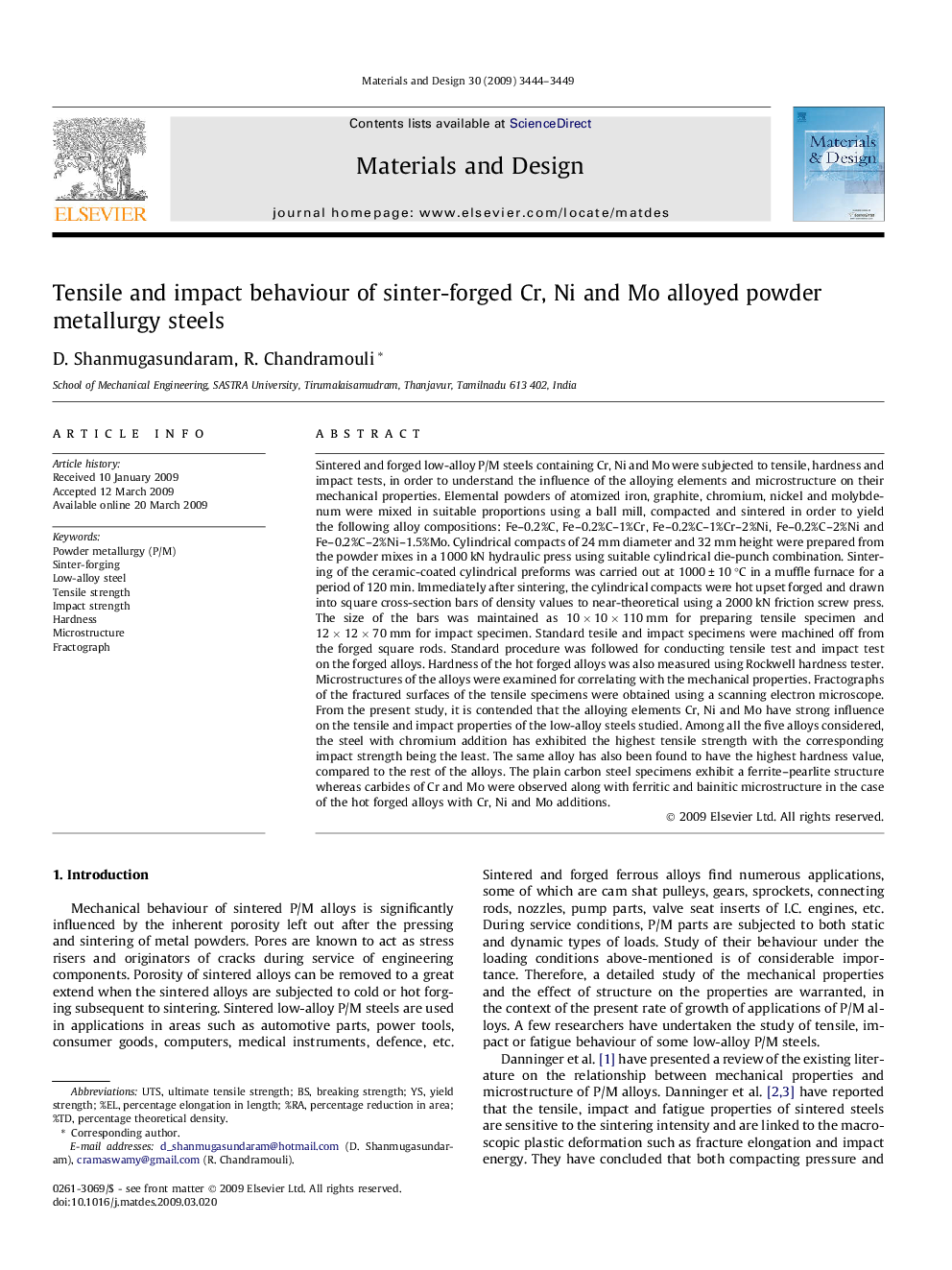| Article ID | Journal | Published Year | Pages | File Type |
|---|---|---|---|---|
| 832630 | Materials & Design (1980-2015) | 2009 | 6 Pages |
Sintered and forged low-alloy P/M steels containing Cr, Ni and Mo were subjected to tensile, hardness and impact tests, in order to understand the influence of the alloying elements and microstructure on their mechanical properties. Elemental powders of atomized iron, graphite, chromium, nickel and molybdenum were mixed in suitable proportions using a ball mill, compacted and sintered in order to yield the following alloy compositions: Fe–0.2%C, Fe–0.2%C–1%Cr, Fe–0.2%C–1%Cr–2%Ni, Fe–0.2%C–2%Ni and Fe–0.2%C–2%Ni–1.5%Mo. Cylindrical compacts of 24 mm diameter and 32 mm height were prepared from the powder mixes in a 1000 kN hydraulic press using suitable cylindrical die-punch combination. Sintering of the ceramic-coated cylindrical preforms was carried out at 1000 ± 10 °C in a muffle furnace for a period of 120 min. Immediately after sintering, the cylindrical compacts were hot upset forged and drawn into square cross-section bars of density values to near-theoretical using a 2000 kN friction screw press. The size of the bars was maintained as 10 × 10 × 110 mm for preparing tensile specimen and 12 × 12 × 70 mm for impact specimen. Standard tensile and impact specimens were machined off from the forged square rods. Standard procedure was followed for conducting tensile test and impact test on the forged alloys. Hardness of the hot forged alloys was also measured using Rockwell hardness tester. Microstructures of the alloys were examined for correlating with the mechanical properties. Fractographs of the fractured surfaces of the tensile specimens were obtained using a scanning electron microscope. From the present study, it is contended that the alloying elements Cr, Ni and Mo have strong influence on the tensile and impact properties of the low-alloy steels studied. Among all the five alloys considered, the steel with chromium addition has exhibited the highest tensile strength with the corresponding impact strength being the least. The same alloy has also been found to have the highest hardness value, compared to the rest of the alloys. The plain carbon steel specimens exhibit a ferrite–pearlite structure whereas carbides of Cr and Mo were observed along with ferritic and bainitic microstructure in the case of the hot forged alloys with Cr, Ni and Mo additions.
